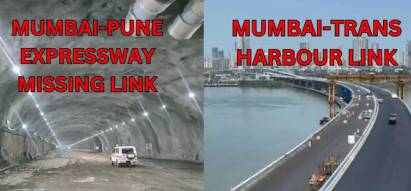Express View on Mumbai Trans Harbour Link: Bridge to prosperity
Last week, the country’s longest sea bridge, the 22-km long six-lane Atal Setu was inaugurated. Formally called the Atal Bihari Vajpayee Sewari-Nhava Sheva Atal Setu or the Mumbai Trans Harbour Link, the bridge has been built at a cost of Rs 17,840 crore. By using it, commuters will be able to cut the travel time between central Mumbai and the fast-growing Navi Mumbai from 2 hours to about 20 minutes. But viewing the Atal Setu merely as a way to decongest the traffic woes in India’s financial capital would be akin to missing the forest for the trees . It is indeed another key step in India’s bid to transform not only its physical infrastructure but also its global image as an investment destination.
While inaugurating the bridge, Prime Minister Narendra Modi said the “Atal Setu is the picture of developed India. This is a glimpse of what a developed India is going to be like.”
Over the past decade , the government has carried out structural reforms that will pave the way for India’s economy to realise its full potential . In the wake of the Global Financial Crisis of 2008, India’s growth story faltered as the economy faced the twin-balance sheet problem — private businesses were over-leveraged while most of the banks were weighed down by non-performing assets . These factors threatened to drag down India’s ability to become an international investment destination and compete with the likes of China.
As things stand today, Indian banks have been nursed back to health , and they are both ready and capable of financing India’s growth. In the meantime , the government has taken a lead in boosting infrastructure. It has done this both by allocating an increasing amount of resources towards capital expenditure as well as improving the implementation of such projects. Most metrics suggest that be it roads, railways, ports, airports or bridges, the pace and quality of construction has risen sharply from the long-term average. What’s more, this pace of infrastructure creation is set to increase.
Focus on boosting infrastructure — be-it physical or digital — is of paramount importance if India wants to truly take advantage of the disenchantment with China that’s setting in several parts of the world. Developed country markets and investors are looking for countries that can replace China in the global supply chain.
India can leverage this opportunity to become a developed country in the next quarter of a century if it can find a way to match its existing advantages of a young and ambitious labour force, a free-market economic system and a vibrant democracy with the kind of infrastructure these deserve. However, a bulk of the capacity enhancements are a result of direct government-spending . In an emerging economy, there are limits to how long the government can go all by itself. For sustained growth, the private sector needs to step-in as well.
